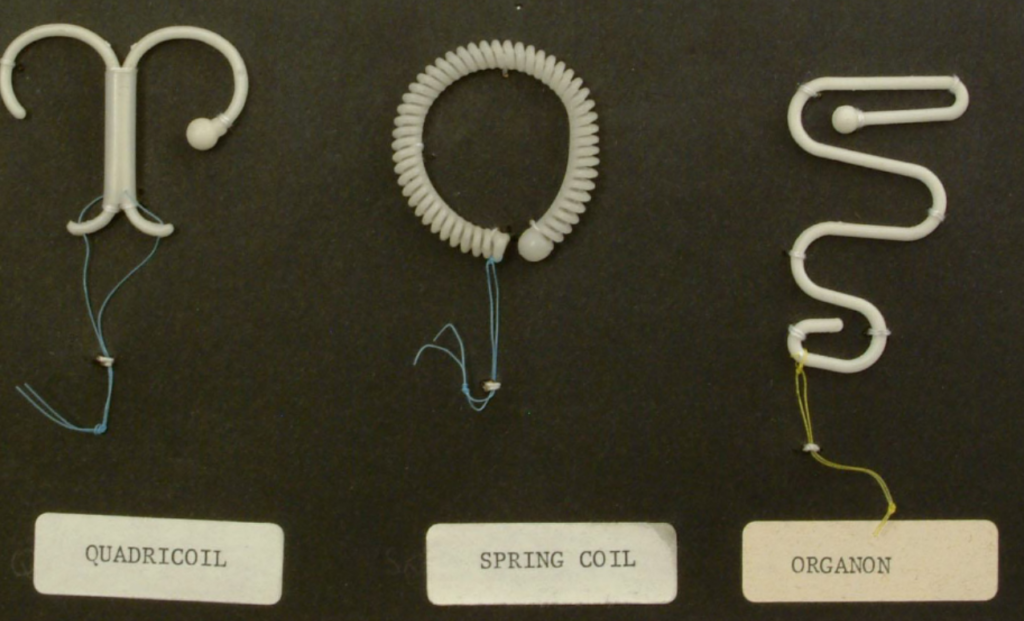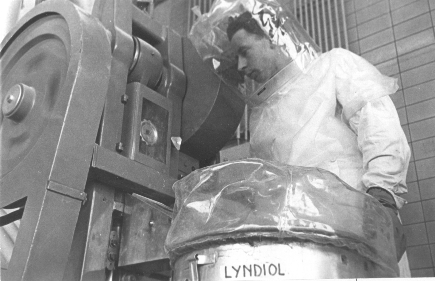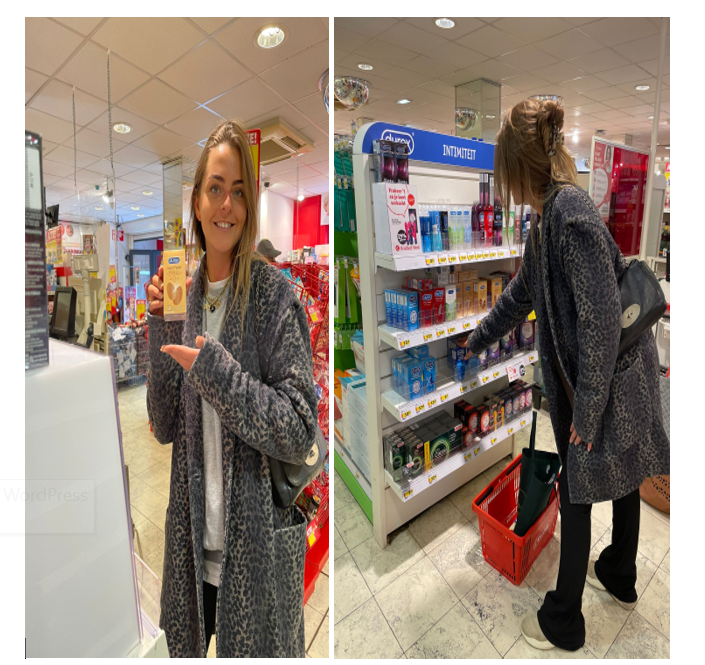Having sex without getting pregnant? Nowadays in the Netherlands the choice is superb. You can choose between many different contraceptives that prevent pregnancy, one of these being a 3 to 5 cm small anchor that is being placed in the uterus and will help prevent pregnancy for 5 to 10 years! It is called the intrauterine device, the IUD. Today, the IUD is safe, effective and easy to acquire. For young adults, generation X, Y and Z, this is a given fact, but how was this back in the days?

In the Rijksmuseum Boerhaave, a museum in Leiden that gives insight into the history of science, a prototype of one of the first effective IUDs is on display. This device was created by the Dutch pharmaceutical company Organon Oss in 1969. The IUD is shaped like an anchor, made of plastic material and about 5 cm wide. It repels only a minimum amount of copper which prevents sperm cells from implanting in the womb. Altough this prototype from 1969 was one of the first safe and effective ones, it definitely was not the first IUD on the market.
The forerunner of the Organon IUD is a variant of the Polish doctor Richard Rickter. Additionally, rumors are being spread about people who traveled in the middle east more than a hundred years ago, placing stones in their camels’ wombs to prevent pregnancy. Nevertheless, the first officially documented IUD is the one of doctor Rickter. This Polish doctor introduced a flexible ring, made of silkworm gut in 1909, with the goal to prevent pregnancy. In the following decades, multiple doctors have experimented with different methods to develop IUDs. These early IUDs can be found in the Museum für Verhütung und Schwangerschaftsabbruch (MUVS), the contraceptives and abortion, museum in Vienna.

One of the other IUDs that was invented around the same time as the one from Organon is the Dalkon Shield created in the Unites States of America. This device came on the international market in 1968, causing catastrophic consequences. The Dalkon Shield looked a little like a turbot fish: it was formed like a drop with five hooks on both sides. Within two years, more than half a million of these IUDs were sold in the United States. Short after, these seemed to be unexpectedly dangerous as many women got pelvic inflammatory disease (PID), became infertile and sometimes resulted in death. Hereafter, the general trust in IUDs was majorly damaged.

In contrast to the Dalkon Shield, the IUD of Organon was safe and effective. The pharmaceutical company based in Oss was founded in 1923 and has since grown to a multinational business still operating today. Their fame has mainly resulted from the production of contraceptives. In 1962, before the creation of the IUD, Organon introduced the birth control pill, called Lyndiol, on the market. These pills were sold as a solution against menstrual disorders and not as a contraceptive, as medicines with the goal to prevent pregnancy was forbidden in the Netherlands until 1969.

Nowadays, buying contraceptives is anything but forbidden in the Netherlands but this was not always the case. Only in 1969 it became legal to openly show, sell and buy contraceptives. The punishment for having and/or selling these products was not light, two months in custody or 400 Dutch guilder was the maximum penalty. Back in the time, contraceptives were only officially available at a Rutgershuis (a practice for sexual health). Unofficially and secretly, these medicines were also sold at some doctors’ offices and pharmacies. Hence, Organon was very progressive in introducing their IUD on the market in the same year it became legal to sell contraceptives.

In an episode of the Dutch television program ‘Andere tijden’, the growing popularity of birth control methods and its effects were highlighted. Contraceptives helped with the emancipation of women as they could now decide for themselves when to become pregnant. To celebrate this, a statue of the birth control pill was in 2015 placed in Oss, the hometown of Organon and the first Dutch manufacturer of the birth control pill and IUD.

Contraceptives are easily accessible in the Netherlands. For condoms you do not have to go to a general practitioner, but you can buy these in all drugstores, supermarkets and even condom automats exist. Even for getting an IUD, only a short visit to the general practitioner is enough. Children are being educated on birth control methods in many different ways such as at school, on online health care platforms like GGD and there is even an online dating show called ‘de vrij veilige datingshow’ where they teach what contraceptive is most suitable for each person. If you are interested to find out whether an IUD is something for you, the show can be watched by clicking here!
Every invention starts somewhere, hopefully this blog shows you that there is always more to the story. As discussed in this blog, it seems that the nowadays known small anchor to prevent pregnancy, the intrauterine device, has a whole backstory. In the past, it used to be seen as a dangerous product due to the failure of the Dalkon Shield device, but nowadays it has a lot of success and it is almost unthinkable to not have a choice in contraceptives. The IUD from Organon Oss has played a major role in the emancipation of women by being the first safe IUD option on the Dutch, and later international, market.
Lot Kuipers